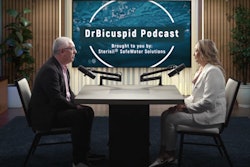When you think about biofilm and its impact on the dental practice, what is your first reaction? Today, we will challenge typical thoughts about biofilm and quite likely give you a new perspective on a well-discussed topic.
 Melissa K. Turner.
Melissa K. Turner.
Next in a series of interviews that is a joint venture between Solmetex and DrBicuspid.com is my interview with Melissa K. Turner, the senior executive consultant and chief hygiene officer at the Cellerant Consulting Group. She is a contributor to DrBicuspid.com and leads the Cellerant Best of Class Hygiene Awards. She is a founding board member of the American Mobile & Teledentistry Alliance and is a co-founder of the Denobi Awards and the National Mobile & Teledentistry Conference.
Read the article that Turner wrote about biofilm earlier this year.
In the conversation, which you can watch below, I interviewed Turner, a biofilm expert, about the two sides of biofilm: the good and the bad. We discussed the importance of understanding the full story of biofilm and its use cases in society. We also dove into the issue of biofilm in dental unit water lines and the risks associated with it. The conversation highlights the need for research, revamping water line protocols, and staying updated on the latest products and technology for biofilm removal. Turner also emphasized the importance of accountability, systems, and delegation of infection control standards in dental practices.
I am so glad we are having this series of interviews run during Dental Infection Control Awareness Month (DICAM). You can learn more about that through the Association for Dental Safety.
Podcast takeaways
- Biofilm has both good and bad sides, and it is important to understand the full story of biofilm.
- Biofilm in dental unit water lines is a problem due to the introduction of bacteria and the formation of slimy biofilm.
- Research and revamping water line protocols are necessary to address the risks associated with biofilm.
- Staying updated on the latest products and technology for biofilm removal is crucial.
- Accountability, systems, and delegation of infection control standards are important in dental practices.



















